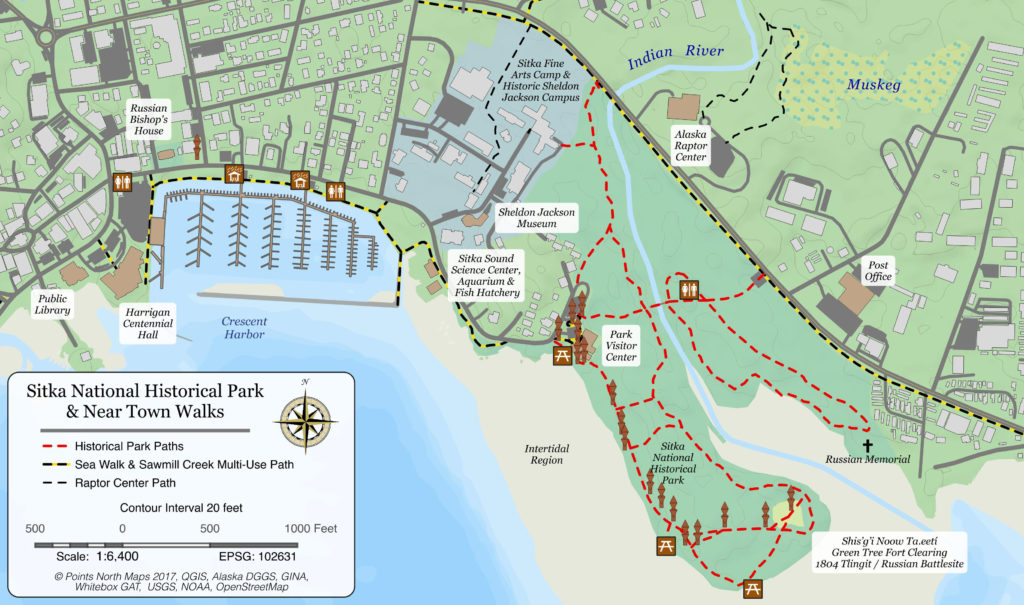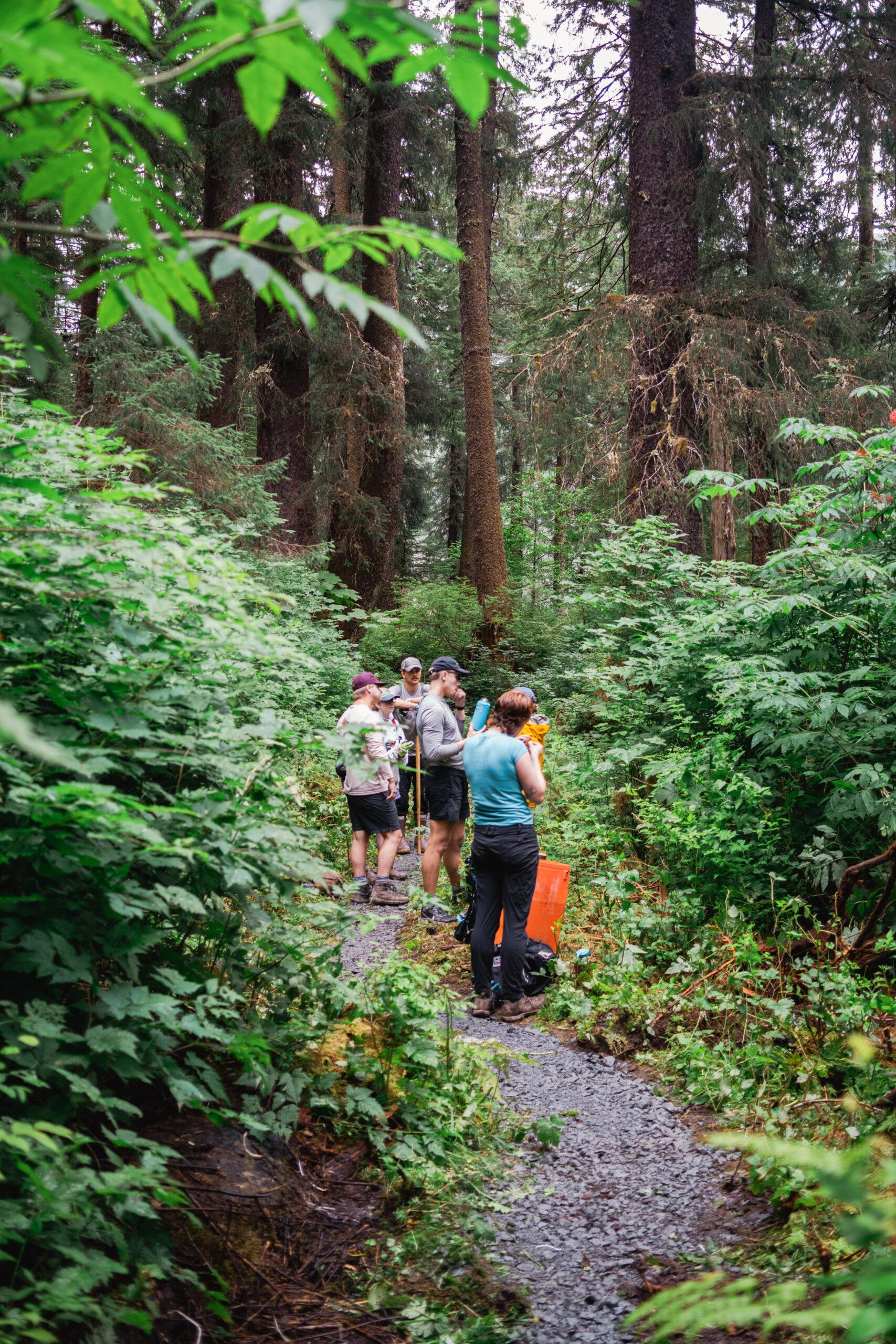- USE : Walk (bikes must be walked)
- DESCRIPTION : Scenic and accessible trail commemorates the site of the Battle of Sitka between the Kiks.ádi Clan (Tlingit) and the Russians in 1804. Historic and contemporary totem poles line the trails throughout the park.
- DISTANCE : 1.5 miles (one way)
- TIME : 1 hour (one way)
- TRAILHEADS : Begins and ends at the Sitka National Historical Park Visitor Center
- ELEVATION GAIN : 20 feet
- RECOMMENDED SEASON : Year round
- LEVEL OF DIFFICULTY : Easy. Well maintained, dry, level trail.
- TRAIL MANAGEMENT AGENCY : US National Park Service

Access
The accessible Sitka Sea Walk begins downtown at Harrigan Centennial Hall and leads to Sitka National Historical Park. The Sea Walk parallels Lincoln Street through Crescent Harbor Park, and leaves the roadway to meander through the forest after the Sitka Sound Science Center. Begin at the ocean front doors of the Visitor Center by the totem pole near the beach.
HISTORY
The park commemorates the site of the Battle of Sitka between the Kiks.ádi Clan (Tlingit) and the Russians in 1804. An informative brochure with a map can be obtained from the park’s Visitor Center.
DESCRIPTION
Sitka National Historical Park trail is made to order for the stroller who wants a taste of southeast Alaska’s forests and waters in a non-strenuous setting. The well maintained trail is in Sitka spruce-western hemlock forest and parallels the shoreline of Eastern Channel. A guidebook is available at the Visitor Center that interprets the totem poles along the trail. During mid to late summer, red huckleberries and blueberries are common. Watch the shore and trees for ravens, eagles and other birds. Squirrels are likely to pop up year-round.
There are numerous spur trails to the adjacent pebble and sand beach. At the southwestern end of the park there are a series of paths running through the beach meadows and grass flats. During the spring and early summer, these meadows support a wide array of colorful wildflowers.
The main trail leads along Kaasda Héen (Indian River) where pink, chum, and coho salmon return to spawn during late summer and early fall. This is truly an amazing sight as thousands of fish are side by side flopping up the river. The best fish viewing point is the arched bridge.
Cross over the bridge and follow another loop trail southeast along the river past the Russian Monument, or northwest through the forest back to the bridge.
The Riverside Trail takes off right before the bridge on the Visitor Center side of the park and connects the park to Sawmill Creek Road.

